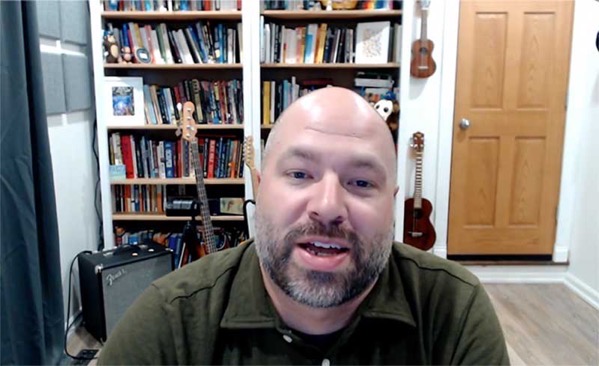Interview with Jason Rodriguez, Email Expert

Jason Rodriguez wants you to create better emails — emails that are responsive and accessible… emails that can handle dark mode… emails that will help you get your message across as quickly and efficiently as possible. Fortunately, Jason also wants to show you how to create better emails!
If you don’t already know Jason, you should know he’s been working professionally on email marketing, design, and development for over a decade, and he was the Community & Product Evangelist at Litmus for several years. (If you’ve ever Googled something involving email deliverability or design, you’ve almost certainly run into a Litmus article, and possibly even one that Jason wrote!) Jason is also the author of several books, including The Ultimate Guide to Email Templates and The Ultimate Guide to Email Accessibility, and he publishes his own email newsletter called The Better Email.
Best of all, Jason is also speaking at our upcoming online event, The Design + Marketing Summit. So we caught up with him and asked him a few questions of our own.
Q: How did you first get into this industry, professionally?
I was always a creative person and loved designing things. In high school I learned Photoshop, Illustrator, and InDesign as part of the yearbook and newspaper teams. In college, I did the graphic design for my band’s flyers and CD covers. (I even built a few websites with iWeb and, yes, customized our MySpace page…) But it wasn’t until around 2007 that I started taking web design and development seriously, teaching myself HTML, CSS, web standards, and enough JavaScript and PHP to be dangerous.
After I built up enough work, I found a job in a local agency. Being in the Detroit area, pretty much every agency supports one of the Big 3 car companies, so I quickly found myself building websites and internal tools for Ford, Lincoln, and Mercury. Since I knew HTML and CSS well, I was also tasked with building HTML email campaigns for millions of subscribers around North America. I learned that email and web design—although they share the same underlying technology—are completely different worlds. Unfortunately, not many people discussed email design online at the time, so it was a lot of trial-and-error to figure out what worked in the InBox.
That led me to start blogging about email design and marketing, and eventually self-publish a book on the topic. Ever since, I’ve been working with email, learning the ins-and-outs of this archaic but surprisingly effective channel, and teaching other people how to send better email campaigns to their subscribers.
Q: What’s the one thing that’s most commonly under-appreciated or misunderstood in your corner of the design and marketing world?
Beyond HTML and CSS, the one thing email has in common with the web is disdain for accessibility. While more email marketers have been focusing on accessibility over the last few years, most senders consider it an afterthought—if it’s thought about at all. But accessibility is just as important in email as it is on the web. By focusing on creating more accessible experiences for people that truly need it, you create better experiences for everyone on your list. Taking an accessibility-focused approach to email marketing leads to more engaging copy, more thoughtful designs, and a more seamless experience for all of your subscribers. It’s worth the investment.
Q: Obscure tip or trick you use all the time?
While I pride myself on being able to hand-code emails from scratch when needed, I also realize it’s usually a massive waste of time to do so. That’s why I’m a huge fan of saving out and relying on snippets of code as opposed to writing them for each email or copying and pasting code from older emails. I use a tool called Alfred on my Mac, and have everything from heading tags to commonly used email templates saved as snippets. All I need to do is type a keyword in my text editor and all the pre-tested code I need is written for me. There are a lot of tools that allow you to save code snippets, but people either don’t know about them or haven’t taken the time to set them up, which leads to a lot of wasted time building emails—not to mention potential errors in their code that could affect how subscribers view their emails.

Q: What are you most excited to share in your upcoming session?
I’ll be covering a lot of ground during my talk at The Design + Marketing Summit—everything from how to design more effective campaigns visually to some common coding mistakes that everyone makes—but I’m most excited to share actionable tips that anyone can use, whether they are designers, developers, or marketers without any coding chops to speak of.
People use a lot of different tools to build and send emails, but there are some very specific things they can be doing in their campaigns to make them more accessible and engaging for their subscribers, not to mention more valuable for their businesses. I plan on rounding up a few of them so that everyone can send better emails—no matter if they’re coding them from scratch or customizing a WYSIWYG template in their email service provider.

